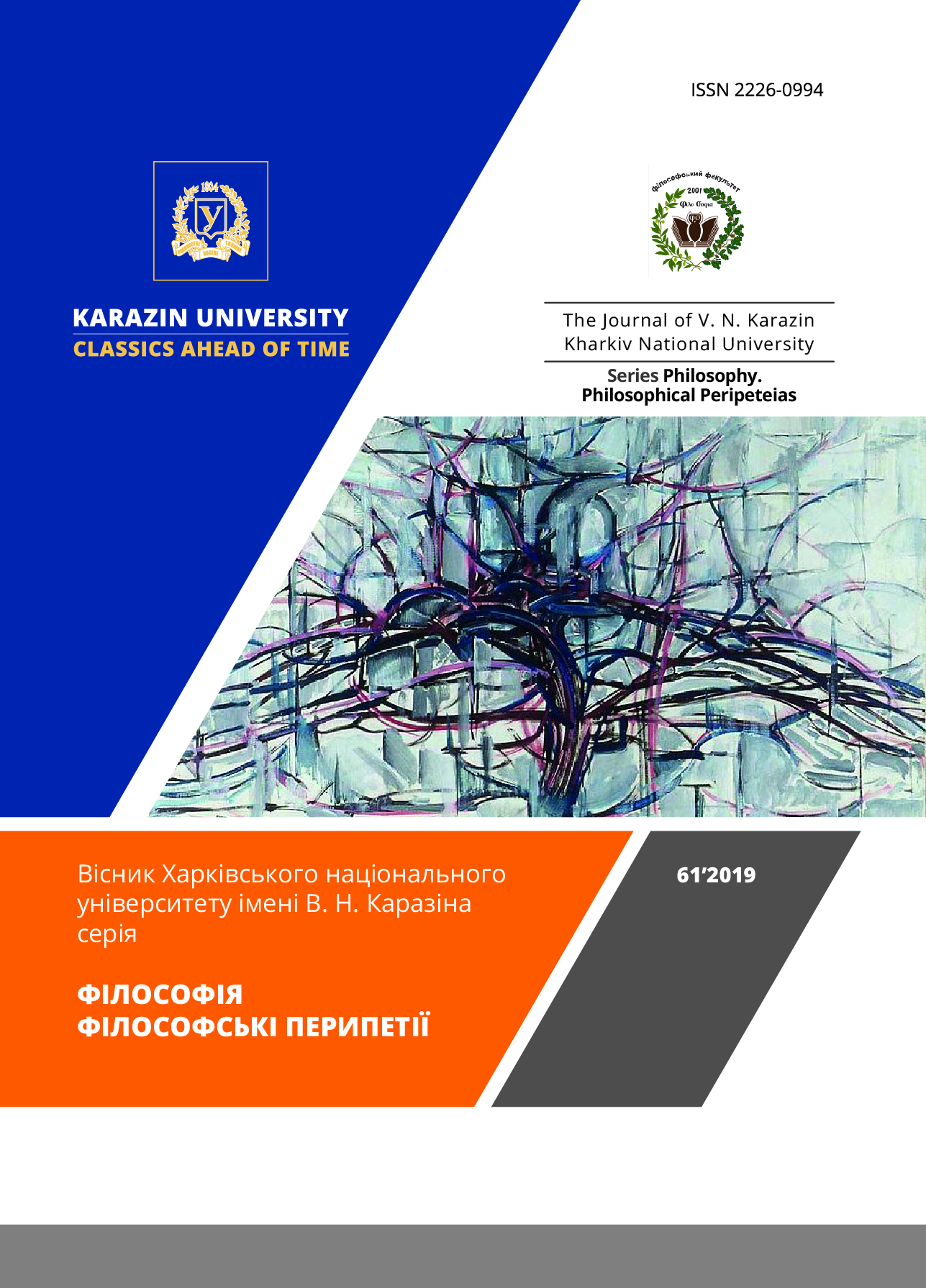THE PROBLEM OF REALITY IN THE TEXTS OF NIELS BOHR
Abstract
The article discusses a new understanding of the reality in the 20th century. Since the key figure in these changes was the Danish physicist Niels Bohr, we refer to his early and later articles to analyze the use of the term “reality”. Through an analysis of the terms, it is shown that Bohr describes discoveries in earlier articles that are inconsistent with old concepts in physics, and it is these questions that will further lead him to a new understanding of reality. In the article we also indicate how many times and in what contexts the term “reality” is used. Further, we find that the term “reality” is more common in later articles than in his earlier works (Copenhagen’s interpretation of quantum theory had not yet been formulated at the time of writing the early works). Through the analyzing of usage of certain terms, we show how the emphasis in the early and late Bohr’s articles shifts. For many years, the Danish physicist has sought to clarify quantum theory. In some later articles, we note that the problems affect not only physical, but also other areas of knowledge. We also analyze the use of the term in later articles. This analysis shows how Niels Bohr’s discoveries in the nature of the objects of the micro-world lead him to questions about the nature of reality. How discoveries in the microcosm affect the new conception of reality is best traced in controversy with other physicists. As the most striking example, we took the article “Discussion with Einstein on epistemological problems in atomic physics”. In this article, Bohr describes the specific behavior of micro-objects, features of physical experiments and proves the idea that a fundamentally new (including ontological plan) understanding of physical processes is needed. An analysis of the terms shows that, from Bohr’s point of view, reality itself is as described by its quantum mechanics. We strive to show the evolution of Bohr’s views in the context of how they influenced the revision of all physics. We conclude that the discovery of stationary states in an atom is the first step to rethinking philosophical questions of a nature of reality.
Downloads
References
/References
Bohr, N. (1921). Atomic Structure. Retrieved from: https://ru.scribd.com/document/251573693/Atomic-Structure.
Bohr, N. (1922). Theory of Spectra and Atomic Constitution. Cambridge: Cambridge University Press.
Bohr, N. (1949). Discussions with Einstein on Epistemological Problems in Atomic Physics. Retrieved from: https://www.marxists.org/reference/subject/philosophy/works/dk/bohr.htm.
Bohr, N. (1958). Discussions with Einstein on Epistemological Problems in Atomic Physics. (V. A. Fok & A. V. Lermontova, Trans.). Uspekhi Fizicheskikh Nauk – Advances in Physical Sciences, 4, 571−598. (In Russian).
Bohr, N. (1970). Selected Scientific Works in 2 Vol. (Vol. 1). (Yu. V. Andreev, S. Yu. Vavilov, Yu. M. Dremin, T. S. Petelina, A. M. Frenk & V. Ya. Frenkel, Trans.). Moscow: Nauka (In Russian).
Bohr, N. (1961). Atomic Physics and Human Knowledge: Collection of Scientific Papers. (V. A. Fok & A. V. Lermontova, Trans.). Moscow: Foreign Literature Publishing House. (In Russian).
Bohr, N. (1985). The Causality Problem in Atomic Physics. (V. A. Fok, Trans.). Uspekhi fizicheskikh nauk – Advances in Physical Sciences, 2, 343−366. (Original work published 1958). (In Russian).
Campbell, N. (1921). Atomic Structure. Nature, 107, 104–107.
Einstein, A. (1935). Can Quantum-Mechanical Description of Physical Reality Be Considered Complete? Physical Review Journals, 7, 777–780.
Miroshnikov, Yu. I. (2011). A. Einstein and N. Bohr: Two Romantics in Search of the Lost Unity of Physical Knowledge. Scientific Yearbook of the Institute of Philosophy and Law of the Ural Branch of the Russian Academy of Sciences, 11, 201−221. (In Russian).
Moore, R. (1969). The Man, His Science, and the World They Changed. (I. G. Pochitalina, Trans., V. F. Kuleshov, Ed.). Moscow: Mir. (Original work published 1966). (In Russian).
Бор Н. Атомная физика и человеческое познание / пер. с англ. В. А. Фока, А. В. Лермонтовой. М.: Издательство иностранной литературы, 1961. 152 с.
Бор Н. Дискуссии с Эйнштейном о проблемах теории познания в атомной физике / пер. с англ. В. А. Фока, А. В. Лермонтовой. Успехи физических наук. 1958. № 4. С. 571−598.
Бор Н. Избранные научные труды: в 2-х т.; т. 1 / пер. с англ. И. В. Андреева, С. И. Вавилова, И. М. Дремина, Т. С. Петелиной, А. М. Френка, В. Я. Френкеля. М.: Наука, 1970. 566 с.
Бор Н. Проблема причинности в атомной физике / пер. с англ. И. С. Алексеева. Успехи физических наук. 1985. № 2. С. 343−366.
Мирошников Ю. И. А. Эйнштейн и Н. Бор: два романтика в поисках утерянного единства физического знания. Научный ежегодник Института философии и права Уральского отделения Российской академии наук. 2011. № 11. С. 201−221.
Мур Р. Нильс Бор – человек и ученый / пер. с англ. И. Г. Почиталина. М.: Мир, 1969. 470 с.
Bohr N. Atomic Structure [Electronic resource]. 1921. URL: https://ru.scribd.com/document/251573693/Atomic-Structure.
Bohr N. Discussions with Einstein on Epistemological Problems in Atomic Physics [Electronic resource]. 1949. URL: https://www.marxists.org/reference/subject/philosophy/works/dk/bohr.htm.
Bohr N. Theory of Spectra and Atomic Constitution. Cambridge: Cambridge University Press, 1922. 126 p.
Campbell N. Atomic Structure. Nature. 1921. № 107. pp. 104–107.
Einstein A. Can Quantum-Mechanical Description of Physical Reality Be Considered Complete? Physical Review Journals. 1935. № 7. pp. 777–780.
Authors who publish with this journal agree to the following terms:
- Authors retain copyright and grant the journal right of first publication of this work under the terms of a license Creative Commons Attribution License 4.0 International (CC BY 4.0).
- Authors are able to enter into separate, additional contractual arrangements for the non-exclusive distribution of the journal's published version of the work (e.g., post it to an institutional repository or publish it in a book), with an acknowledgement of its initial publication in this journal.
- Authors are permitted and encouraged to post their work online (e.g., in institutional repositories or on their website) prior to and during the submission process, as it can lead to productive exchanges, as well as earlier and greater citation of published work.






3.gif)




